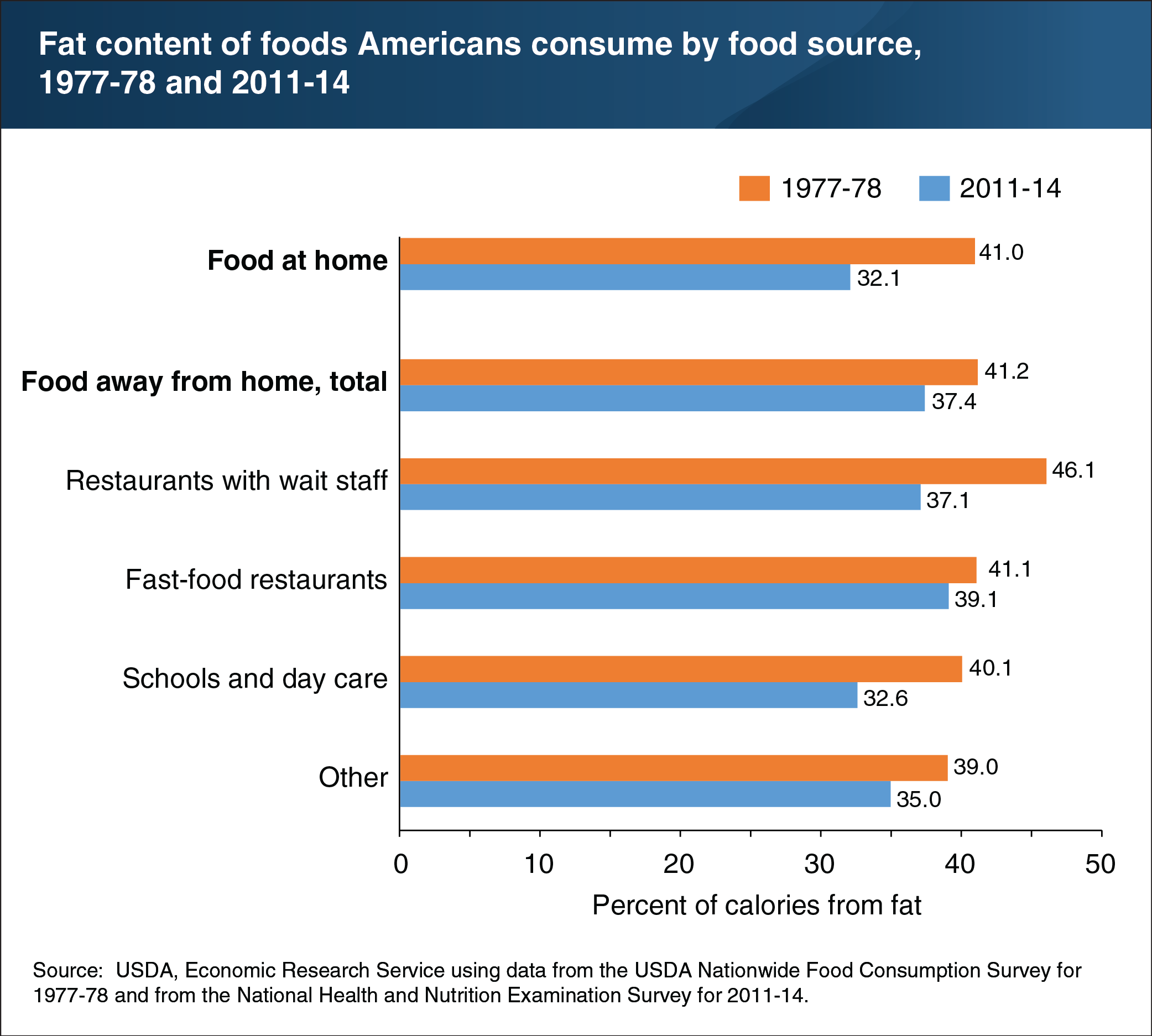Declines in fat content have been largest for home-prepared food
- by Joanne Guthrie and Biing-Hwan Lin
- 12/11/2018

A recent ERS analysis found that over the last 35 years, the percent of calories coming from fat in at-home foods consumed by Americans declined more than the fat content of away-from-home foods. (At-home foods are foods purchased from supermarkets and other retailers; away-from-home foods are obtained from restaurants, schools, vending machines, sports venues, and other away-from-home sources.) The fat content of at-home foods fell from 41.0 percent of calories in 1977-78 to 32.1 percent in 2011-14. Over the same period, the fat content of away-from-home foods dropped less sharply from 41.2 to 37.4 percent. Changes in fat content can occur because of different choices being made by consumers, changes in product formulations, or both. Changes in fat content varied among the away-from-home sources. The fat content of fast food changed little, while the fat content of foods from restaurants with wait staff declined from 46.1 to 37.1 percent. The fat content of school meals fell to a level similar to that of food at home. School food consists primarily of meals served as a part of USDA’s National School Lunch Program and School Breakfast Program, which are required to meet Federal nutrition standards. This chart appears in “Both At Home and Away, Americans Are Choosing More Lower Fat Foods Than They Did 35 Years Ago” in ERS’s Amber Waves magazine, October 2018.

